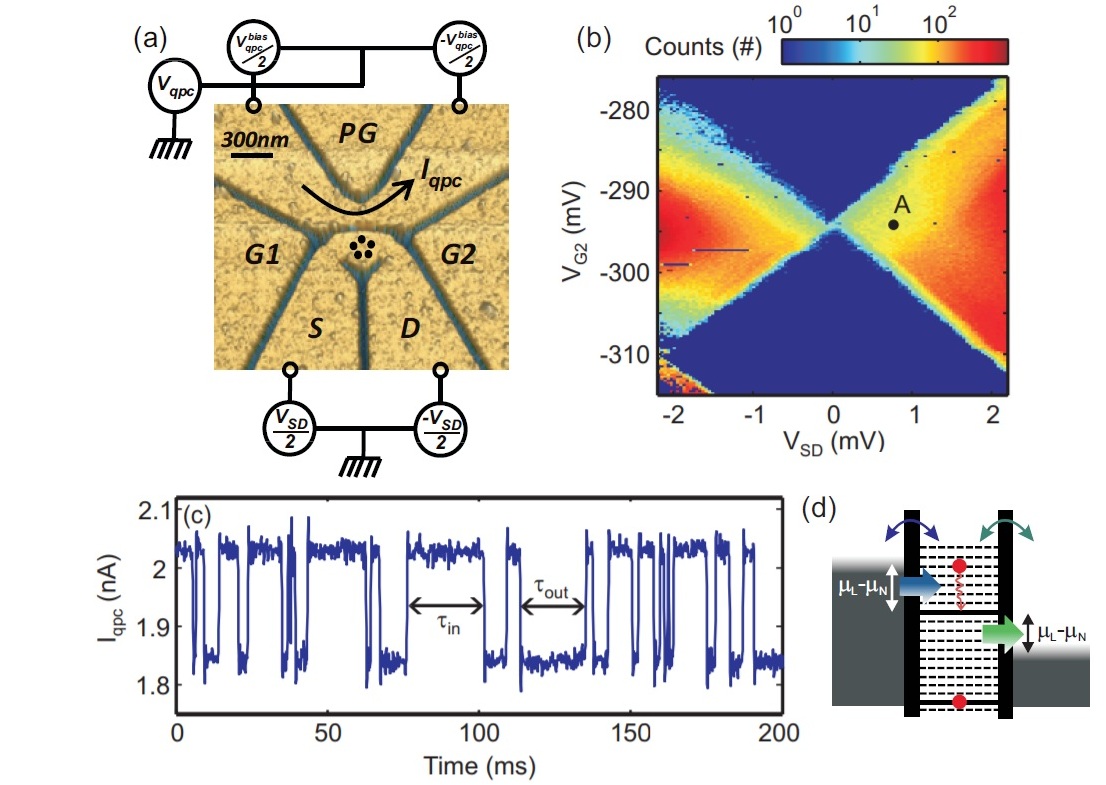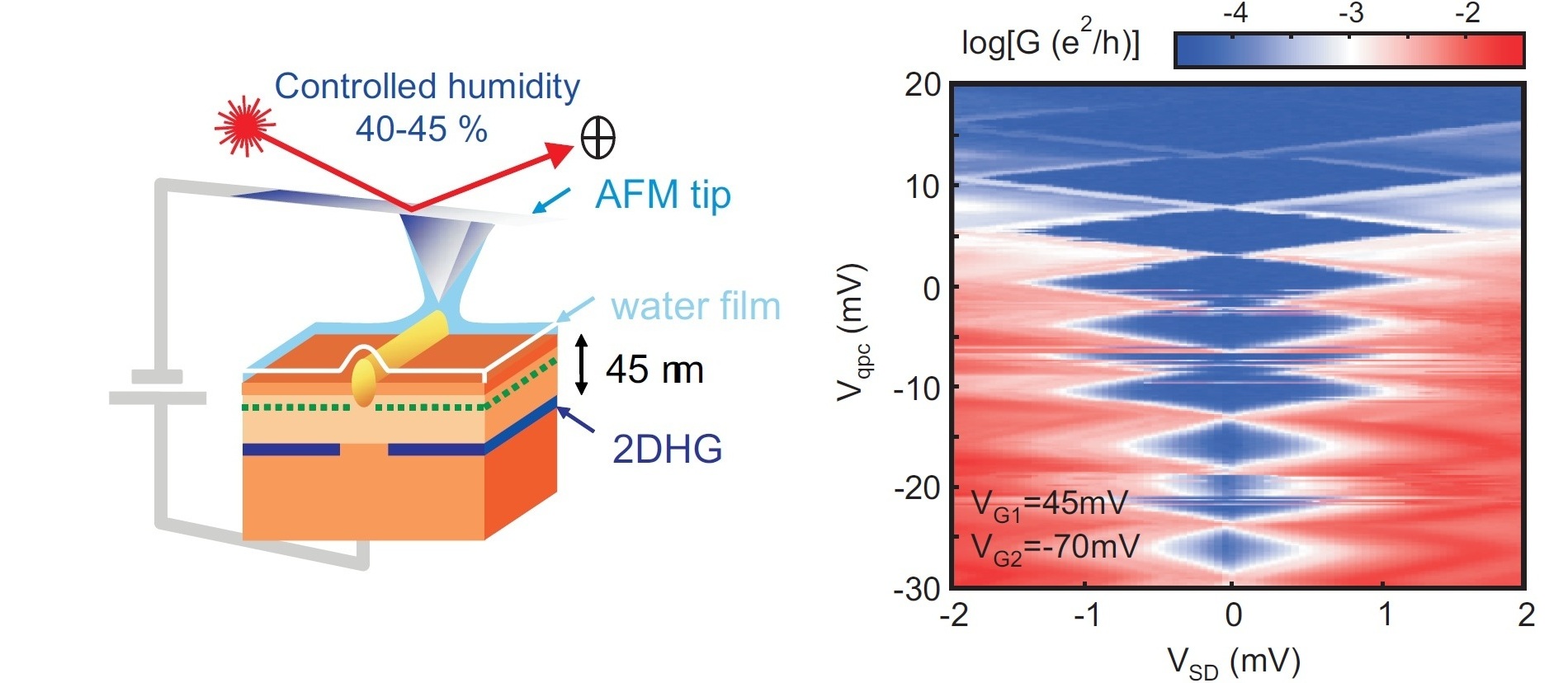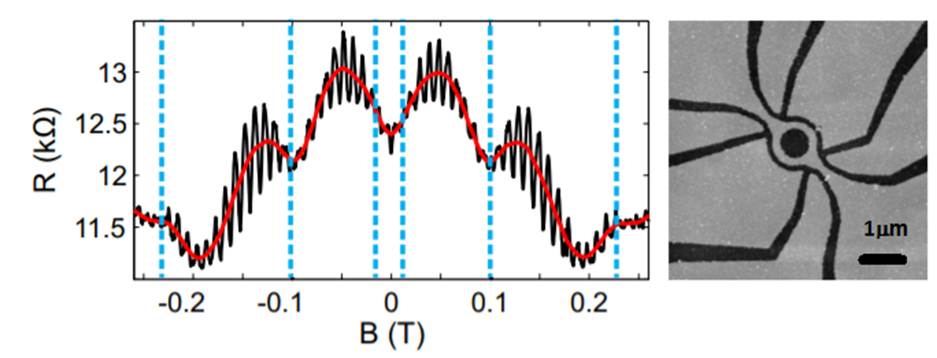Time-resolved charge detection
Y. Komijani, T. Choi, F. Nichele, K. Ensslin, T. Ihn, D. Reuter, and A. D. Wieck, Counting statistics of hole transfer in a p-type GaAs quantum dot with dense excitation spectrum,Phys. Rev. B 88, 035417 (2013).

- In this work, we fabricated a quantum point contact (QPC) in the vicinity of a quantum dot (QD) to use it as a charge detector (top left). The lower plot shows a trace of the QPC current each time a hole tunnels in or out of the QD.
- The color plot in the top right panel shows the number of such events as the gates are tuned, shwoing the Coloumb diamons. The fact that the events increase monotonically with the bias suggests that the dot contains a dense spectrum of excited states (bottom right).
- By analyzing the statistics of such events we can learn about the internal structure of the QD. Curiously, this statiscs suggests only a two-level (charge-in, or charge-out) system.
- We put forward a simple model showing that whenever more than two-levels are involved (e.g. an excited state) the system would show non-Markovian signatures in its statistics. However, if the relaxation is large enough, Markovian statistics is recovered.
Fabrication techniques
Y. Komijani, M. Csontos, T. Ihn, K. Ensslin, D. Reuter, and A. D. Wieck, Observation of excited states in a p-GaAs quantum dot, Europhys. Lett. 84, 57004 (2008).
M. Csontos, Y. Komijani, I. Shorubalko, K. Ensslin, D. Reuter, and A. D. Wieck, Nanostructures in p-GaAs with improved tunability, Appl. Phys. Lett. 97, 022110 (2010).

- A few words about fabrications. We used two methods. 1) Local oxidation of the surfance of a p-doped GaAs using an AFM tip (shown on left). 2) e-Beam lithography followed by wet etching. 3) Sometimes we covered the surface with Al2O3 and deposited a top gate for improved tunability.
- As an example, the right panel shows the differential conductance of a quantum dot (QD), exhibiting Coulomb blockade. This was the smallest hole QD and we could resolve excited states (more in the paper).
Berry's phase in Aharonov-Bohm Rings?
F. Nichele, Y. Komijani, S. Hennel, W. Wegscheider, T. Ihn, K. Ensslin, C. Gerl, D. Reuter, A. D. Wieck, Aharanov-Bohm rings with strong spin-orbit interaction: the role of sample-specific properties, New J. of Phys. 15, 033029 (2013).

- Left: Conductance of an Aharonov-Bohm ring (right) shows oscillations as a function of a magnetic field perpendicular to the plane, each time a magnetic flux passes through the ring.
- In this paper, we were interested in the modulations in the envelope of these oscillations. It has been proposed that these oscilations may arise due to a Berry's phase coming from spin-orbit interaction and the interference of the spin of the wavefunction.
- But they may also come from disorder creating multiple paths throgh the ring. This is a long story which is partly discussed in this work.